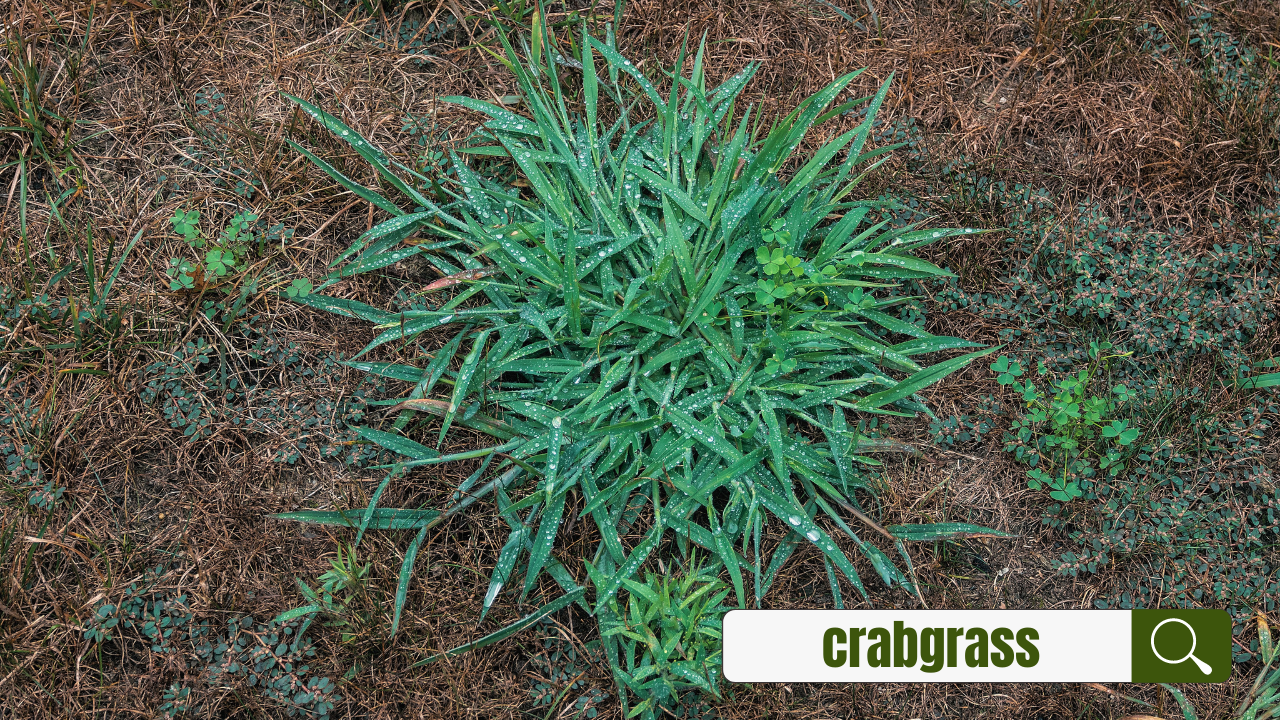Are you still uncertain which type of grass is plaguing your lawn? Two of the most common ones are crabgrass and quackgrass, and it’s common for homeowners to interchange the two given their visual similarities.
Crabgrass (an annual weed that acts like a perennial) thrives during the warm seasons, while perennial quackgrass is cool-season grass. The roots of crabgrass resemble a crab-like structure, while quackgrass forms horizontal and deep rhizomes beneath the soil.
If you want to identify which among the two grass weeds you’re currently dealing with, let’s discuss the differences between the two and the standard solutions to eradicate these grass weeds.
What is Quackgrass?
Important Note: Quackgrass may also be listed as Agropyron repens, Elymus repens, or Elytrigia repens. Others also like to refer to it as couchgrass.

This perennial grassweed is commonly mistaken for crabgrass or ryegrass, as these grasses have the characteristic long tapered blades.
Here are the most common features of quackgrass:
As per the U.S National Invasive Species Information Center, a quackgrass invasion may quickly crowd out native lawn grass and crops.
It can be challenging to control the distinct growth pattern of quackgrass, especially if the invasion is extensive. Roundup can only do so much at eliminating the individual quackgrass weeds. Once you till the land, likely, you may accidentally cut the rhizomes beneath the surface. That poses a challenge in itself. The remaining pieces will thrive as individual plants that will spread below and on the surface.
What is Crabgrass?
Scientifically known as Digitaria sanguinalis, the name “crabgrass” is derived from its signature root development. It grows low in the ground, with stems sprouting from the clump’s center. If you can picture it: the growth resembles that of a crab’s legs.

Many homeowners struggle to identify the presence of crabgrass, as it is known to notoriously adapt to whatever environment it is currently in. For example, there are hairy or smooth, short or long, and Asian or Southern crabgrass varieties.
Crabgrass is one of the most problematic lawn weeds, even in the warm season. Once your lawn enters dormancy, uncontrolled crabgrass will continue to thrive and take over your picturesque property before you know it. It can be challenging to eliminate this weed if you fail to do the proper crabgrass control measures. (Related: The Best Liquid Crabgrass Killer Concentrates to Keep your Lawn Weed-Free)
Quackgrass vs. Crabgrass: How to Know the Differences
Given several similarities between quackgrass and crabgrass varieties, they can also be distinctly different from each other. The similarities include coarse, thick leaves and the ability to thrive in gardens and other common lawn grasses.
Beyond that, there’s not much that will confuse you.
Quackgrass is a cool-season perennial; crabgrass is a warm-season annual weed that mimics a perennial
Perennial quackgrass means it can survive well in the cool season. Meanwhile, crabgrass has an indeterminate growth pattern (where it’s an annual weed that acts like a perennial), so it grows in the warm months. Crabgrass is also active in various regions with a warm, tropical climate.
Different short-term solutions, similar long-term solutions
Though both weeds differ in how they spread, they have similar eradication solutions, especially in the long term (such as using pre-emergence herbicide or preventer). But, you may want to try different methods if you’re looking for short-term fixes.
Varying Root Structure
Crabgrass roots are notably shallow, and it resembles that of a crab’s legs (where it got its name from). However, the quackgrass roots grow horizontally, deep into the soil due to the rhizomes. Both types of weeds will struggle to thrive in shaded, thick lawns.
Reproduction
Quackgrass reproduces from the rhizomes underground, known to grow continuously. Meanwhile, the roots of crabgrass resemble a crab-like structure which allows it to stay shallow into the ground.
Methods of Weed Control
To break the germination cycle of crabgrass, the most effective method is to get rid of it once it matures. But controlling the growth of crabgrass will pose a challenge on your end as it needs both chemical and mechanical treatments. Some experts may also recommend preventative methods in place to avoid resurgence.
Physical Characteristics
Crabgrass shoots develop to form stumps in a star-like shape. At the same time, quackgrass stems grow individually as they take over the lawn area. The leaves of crabgrass also grow separately from the stem. Quackgrass leaves have distinct auricles, which then hook around their branch.
Conclusion
Pesky, invasive weeds such as quackgrass and crabgrass can become a significant obstacle to your goal of growing a lush, picturesque lawn. Visually speaking, these weeds tend to stick out of the picture and ruin the aesthetics you are going for.
Even professional lawnmowers may struggle in eliminating these weeds for good, as they are clumpy, stubbornly tough, and may notoriously evade even the sharpest tools in your shed.
But no matter how difficult it is to remove these weeds from your lawn, we strongly recommend acting on the problem at once before the situation goes out of control if you just let them thrive and take over the area.
Eradicating these stubborn weeds will undoubtedly be easier if you can identify the type you are dealing with, whether quack grass or crabgrass. This makes it easier to narrow down the effective treatment methods you can follow and try.
Tips on How to Control Quackgrass
Tips on How to Control Crabgrass
Defensive Lawn Care
Both quackgrass and crabgrass are opportunistic weeds that thrive where lawn grass is weak or non-existent.
As a result, the most robust deterrent to either of these weeds is a healthy lawn. Deep roots are fundamental since they are a crucial defense against the effects of summer drought. Drought causes openings in the turf, allowing crabgrass, quackgrass, and other weeds to grow.
Crabgrass and quackgrass are opportunistic weeds that thrive where lawn grass is weak or absent. A soil test is always the start of good lawn care. Even if it costs a little more, ask for the amount of organic matter in your soil test results. The test may suggest using lime or sulfur (6.5 to 7.2). It may recommend using compost to build organic matter. Finally, the soil test results will advise the appropriate amount of nitrogen, phosphorus, and potassium levels for healthy turf.

